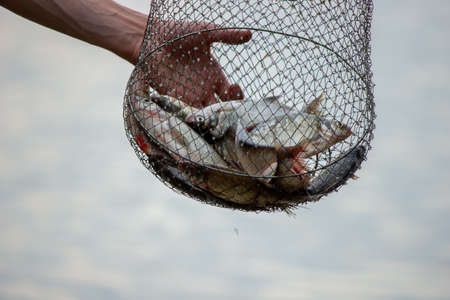Introduction to Fish Stocking and Habitat Assessment in the UK
Across the picturesque rivers, lakes, and reservoirs of the United Kingdom, fish stocking and habitat assessment have long been integral to sustaining vibrant fisheries. From historic angling clubs along the Thames to tranquil lochs in Scotland, these practices ensure both ecological balance and continued enjoyment for anglers and visitors alike. The careful introduction of native and sometimes non-native species has helped maintain healthy fish populations where natural recruitment may be insufficient due to environmental pressures or historical overfishing. Meanwhile, thorough habitat evaluations allow fishery managers to understand the dynamic conditions affecting aquatic life, from water quality to spawning grounds. In recent years, technology has begun to revolutionise how British fisheries approach these challenges. Digital mapping, remote sensing, and data analytics are now providing fresh insights into complex ecosystems. As we journey deeper into this topic, it’s clear that innovative tools are shaping a new era for fish stocking and habitat management across the UK’s diverse waterscapes.
Traditional Practices and their Limitations
Before the digital age, British fisheries were managed using time-honoured methods that had been passed down through generations. These techniques, while steeped in tradition and local knowledge, often relied heavily on manual observation, physical record-keeping, and direct human involvement. Fisheries managers would monitor stock levels by netting sample fish or counting catches at weirs, while habitat assessments involved wading into rivers to visually inspect water clarity, vegetation cover, and spawning grounds. Although these practices fostered a deep connection between anglers, gamekeepers, and their natural surroundings, they presented several notable challenges.
| Traditional Method | Strengths | Limitations |
|---|---|---|
| Netting & Counting | Hands-on experience; Immediate feedback | Labour-intensive; Prone to human error; Disturbs habitat |
| Paper Logbooks | Personal record-keeping; Encouraged stewardship | Easily lost/damaged; Difficult data sharing or analysis |
| Visual Surveys | Accessible; Low-cost | Subjective results; Misses underwater/inaccessible areas |
| Anecdotal Evidence | Rich local knowledge; Community engagement | Lacks scientific rigour; Hard to validate or scale up |
These approaches often struggled to keep pace with growing pressures on British waterways—be it from pollution, invasive species, or increased angling activity. Data collected was sometimes patchy or inconsistent between regions, making it difficult for fisheries managers to spot long-term trends or coordinate conservation efforts nationally. Furthermore, traditional methods could inadvertently stress delicate habitats or spawning populations during surveys. As a result, there was an increasing call across the UK’s angling community for more robust, less intrusive ways to protect and enhance our cherished fisheries—a call that set the stage for the modern technological revolution.
![]()
3. Cutting-Edge Technology in British Fisheries
Across the rolling landscapes and winding waterways of the UK, British fisheries are embracing a new era defined by innovation. Today’s fishery managers and conservationists are kitted out with more than just waders and nets; they’re employing state-of-the-art technology to ensure our rivers, lakes, and coastal waters remain teeming with life for generations to come.
Drones: A Bird’s-Eye View of Aquatic Life
Drones have quickly become an essential tool for fisheries across Britain, offering panoramic aerial views that were once unimaginable. Whether flying over chalk streams in Hampshire or the rugged lochs of Scotland, drones help monitor fish movements, spot illegal activities, and map complex habitats—all without disturbing the ecosystem below. Their ability to capture high-resolution imagery is changing how we understand fish behaviour and habitat use, giving British fisheries a true bird’s-eye perspective.
Remote Sensing: Reading the Water from Afar
Remote sensing technology is another game-changer, letting scientists gather crucial data on water temperature, quality, and vegetation without setting foot in the river. Using satellite imagery and sensor-laden buoys, British fisheries can now assess everything from algal blooms in Norfolk Broads to sediment levels in Welsh rivers. This hands-off approach not only saves time but also reduces human impact on delicate aquatic environments—keeping habitats pristine while staying fully informed.
Acoustic Tracking and Sonar Imaging
With acoustic tracking devices, researchers can follow individual fish as they migrate along the River Thames or spawn in Lake Windermere. Sonar imaging reveals underwater structures where young fry might shelter or where invasive species could hide. These technologies provide detailed snapshots of fish populations and their preferred haunts—vital information for effective stocking and habitat management across British waters.
The Local Touch: Adapting Tech to British Waters
What sets the UK apart is its knack for blending these high-tech approaches with deep-rooted angling traditions. From tailored apps that log catch-and-release data in Yorkshire canals to community-led drone surveys along Cornish estuaries, local knowledge pairs seamlessly with digital advancements. This fusion ensures that technology remains a trusted companion—supporting sustainable practices while respecting the character and charm unique to Britain’s fisheries.
4. Data-Driven Decisions and Sustainable Management
Modern British fisheries are embracing a new era of precision thanks to real-time data analysis, empowering managers to make smarter choices that put sustainability at the heart of every decision. By harnessing technology such as remote sensors, smart tags, and digital monitoring platforms, fishery stewards can now access a wealth of up-to-the-minute information. This shift towards data-driven management means less guesswork and more confidence when balancing stocking rates with ecological health across our lakes, rivers, and reservoirs.
How Real-Time Analysis Transforms Fishery Management
Imagine the advantage: fishery managers can monitor oxygen levels, water temperature, fish movements, and population densities all in real time. The days of relying solely on seasonal surveys or anecdotal evidence are fading; instead, managers receive instant alerts to environmental changes or unexpected trends. This not only allows for rapid response but also supports long-term planning by building a rich historical dataset unique to each site.
Key Benefits of Real-Time Data in British Fisheries
| Benefit | Description | Example in Practice |
|---|---|---|
| Enhanced Stocking Decisions | Data guides the timing and volume of fish releases to best support local ecosystems. | Adjusting trout stocking based on recent water temperature spikes in a Cotswolds lake. |
| Sustainable Catch Limits | Live population monitoring helps set quotas that avoid overfishing. | Dynamically managing coarse fish harvests on the River Trent after population surges. |
| Improved Habitat Protection | Early warning systems flag pollution or habitat stress before damage escalates. | Promptly responding to low dissolved oxygen readings during summer heatwaves in Norfolk Broads. |
| Community Engagement | Transparent sharing of data builds trust with local anglers and stakeholders. | Publishing weekly water quality reports for members of an angling club near Lake Windermere. |
Towards a Greener Future for British Waters
The move to data-driven decision making is ensuring that British fisheries remain not just productive but also resilient. Managers are better equipped than ever before to nurture native species, prevent invasive outbreaks, and maintain the delicate balance between recreation and conservation. As more fisheries adopt these innovative technologies, the future looks bright for sustainable angling adventures across the UK’s storied waterways.
5. Case Studies: British Innovations in Action
Revolutionising Rutland Water with Smart Stocking
Set amidst the rolling landscapes of Rutland, Rutland Water has become a beacon for technology-driven fishery management. Here, state-of-the-art sonar mapping is used to monitor fish distribution and habitat changes throughout the seasons. Local rangers utilise mobile apps synced with GPS trackers on stocking boats, ensuring each section of the reservoir receives a tailored mix of native species. Anglers visiting Rutland now enjoy not only improved catches but also participate in citizen science by uploading their own catch data, creating a feedback loop that benefits both fish and fishermen.
Game-Changing Tech at Chew Valley Lake
Chew Valley Lake, nestled in the heart of Somerset, has taken habitat assessment to the next level. Remote-operated underwater drones glide beneath the surface, capturing high-resolution imagery and water quality metrics. This real-time information allows managers to adjust restocking efforts promptly, maintaining ecological balance without disturbing the tranquil beauty of this iconic site. Local angling clubs often host “tech days,” inviting visitors to get hands-on with the latest gadgets—an experience that combines traditional British hospitality with cutting-edge innovation.
Thames Trout: Urban Renewal through Data-Driven Management
The River Thames, long associated with city life and history, is now at the forefront of urban fishery renewal thanks to advanced telemetry systems. Tagging and tracking trout populations as they migrate through London’s waterways provides invaluable insights into spawning habits and pollution impacts. Community-led initiatives, supported by local councils and environmental groups, have embraced these technologies—leading to cleaner waters and healthier fish stocks. It’s a classic example of how British ingenuity meets grassroots passion to restore one of the nation’s most beloved rivers.
Local Voices: A Blend of Tradition and Progress
From Scotland’s lochs to Yorkshire’s reservoirs, local fisheries are embracing change while preserving cherished customs. Anglers now swap stories not just about “the one that got away,” but about app alerts showing water conditions or drone footage revealing hidden weed beds. These innovations are not just enhancing catches—they’re making every visit a journey into the future of British fishing culture.
6. Challenges, Community Perspectives & The Way Forward
Modernising British fisheries with advanced technologies presents a unique set of challenges and sparks lively debate among local angling communities. While innovations such as drone mapping, underwater sensors, and data-driven fish stocking strategies promise precision and efficiency, many seasoned anglers remain cautious about the rapid shift from traditional practices. Concerns often centre on the potential loss of heritage, disruption to natural balance, and the cost implications for grassroots clubs. Yet, there’s an emerging appreciation for how these digital tools can safeguard fisheries for future generations by offering clear insights into stock health and habitat quality.
Community Attitudes: Embracing Change or Holding Back?
British anglers are famously passionate about their sport’s traditions—from dawn outings with simple tackle to the camaraderie found along rural riverbanks. For some, the introduction of high-tech equipment feels at odds with this cherished culture. However, a growing number are beginning to see technology as an ally rather than an adversary. Younger anglers, in particular, are enthusiastic adopters of mobile apps for catch recording and water quality tracking. Meanwhile, established clubs are exploring partnerships with tech firms and research groups, recognising that embracing innovation may be key to sustaining both fish populations and angling itself in an era of environmental change.
Barriers to Widespread Adoption
Despite the clear benefits, several obstacles remain on the path towards fully tech-integrated fisheries management across Britain. Cost remains a significant hurdle—many small community-run waters simply cannot afford state-of-the-art kit without external support or funding. There’s also a learning curve; training volunteers to interpret complex data or operate sophisticated equipment requires time and resources. Furthermore, ongoing maintenance and data security are essential considerations when integrating remote monitoring systems into everyday fishery operations.
The Road Ahead: Blending Innovation with Heritage
Looking forward, the future of British fisheries lies in striking a thoughtful balance between tradition and progress. Collaboration is likely to be central—bringing together government agencies, angling clubs, conservationists and tech developers to share knowledge and resources. Funding opportunities, such as grants for sustainable fishing initiatives or community science projects, could help bridge gaps in access. Above all, fostering open dialogue within angling communities will ensure everyone has a stake in shaping how technology enhances—not replaces—the quintessentially British experience of casting a line into tranquil waters.

